Atari 5200
Top 10 Best Atari 5200 Games of All Time!
The Atari 2600 was easily the most successful console of its era and the Atari brand was synonymous with video games. The Atari 2600 eventually began to face competition, and the Atari 5200 SuperSystem was the delayed response to Mattel’s Intellivision. The 5200 launched in November of 1982, but several key factors prevented it from seeing success in the marketplace. The 5200 had better sound and graphics than the 2600, but it simply wasn’t the type of evolution Atari fans were expecting after five years of waiting. The 5200 was also marred by one of the worst controllers of all time. Atari was trying to take a step forward by incorporating analog movement into the 5200 controllers, but the joysticks were ungainly and unreliable. (They lacked a self-centering mechanism, provided uneven resistance when moving diagonally, and had a tendency to fall apart for no reason whatsoever.) Perhaps the biggest reason why the 5200 was unable to gain traction was due to its inability to play Atari 2600 games. Atari eventually released an adapter that would allow consumers to play all Atari 2600 games on the 5200, but Mattel and Coleco were somehow allowed to release similar devices for their consoles as well. Needless to say, the Atari 5200 wasn’t nearly as successful as its immediate predecessor. Atari discontinued the 5200 in 1984, but the 2600 continued to sell into the early ’90s.
10
Gremlins
1986
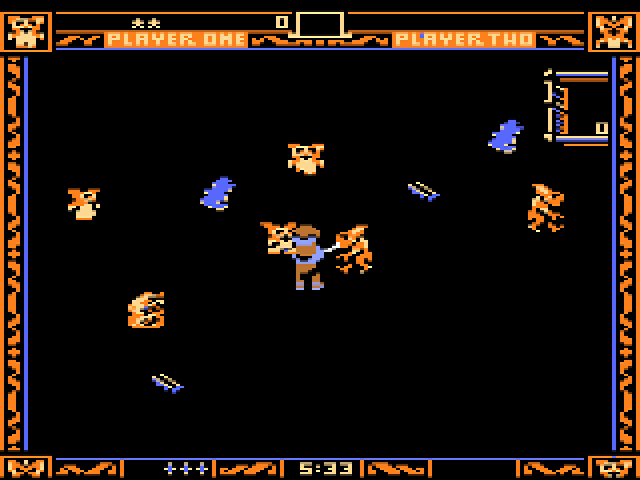
Movie-based games on home consoles had a pretty bad reputation in the early ’80s. (E.T., for example, is often considered to be the worst game of all time.) Gremlins is one of the earliest examples of a movie-based game that actually works. The sprites resemble the characters from the movie, the animation adds a lot of personality to the game, and the music truly captures the spirit of the film. Each stage in the game is populated by lovable Mogwais and dangerous Gremlins. The Mogwais will transform if they touch food, while the Gremlins will multiply if they come into contact with water. (The game obviously doesn’t follow the exact rules that were laid out in the film, but I’ll afford the developers a little creative freedom in this case.) The basic objective in the game is to gather all of the Mogwais into a pen in the corner of the screen. As for the multiplying Gremlins; players must destroy them with swords! I certainly don’t remember that happening in the movie, but it makes for a pretty entertaining game. At the risk of spoiling the rest of the list for you, Gremlins happens to be the highest-ranked game on this list that wasn’t ported from the arcades or another console.
9
Space Dungeon
1983
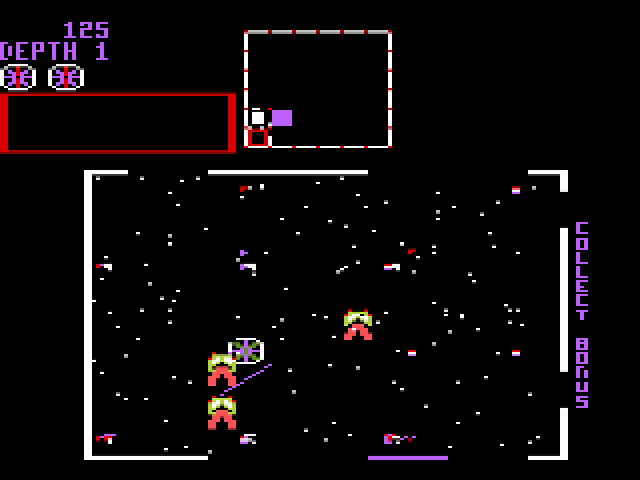
Originally released in 1981, Space Dungeon was an innovative arcade game that felt radically different from basically every other space shooter of the era. The most interesting aspect about the game was the fact that it used two joysticks and allowed players to move their ship in one direction while shooting in another. (A similar control scheme would be used by Robotron: 2084 the following year.) Each level in Space Dungeon consists of 36 rooms arranged in a six-by-six grid. The setup varies from one room to the next, but the basic goal is to kill aliens, avoid lasers, collect treasure, and eventually escape to the next room. The enemies in the Atari 5200 port are larger and less aggressive than they were in the arcade version, and the game suffers from occasional bouts of slowdown. It’s hard to complain when you consider the circumstances around the game. The Atari 5200 port of Space Dungeon is the only home version in existence, and it’s clear that a lot of effort was put into the project. The game even came prepackaged with a handy controller coupler that connected two joysticks together and let players experience the game as it was intended to be played.
8
Joust
1983
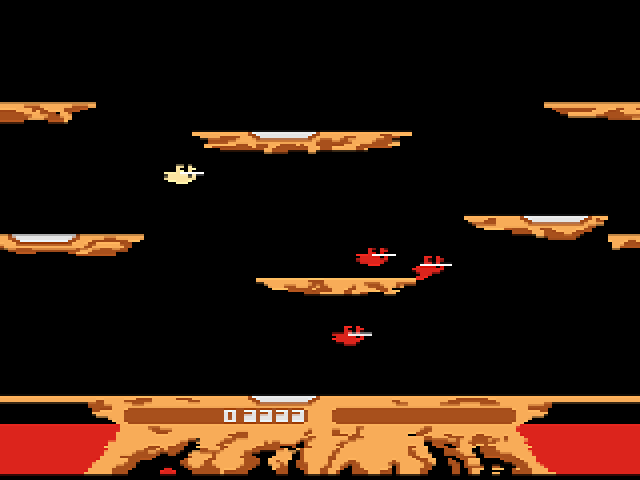
Joust is a simplistic, single-screen platform game that helped revolutionize the entire industry. The game was perhaps most notable for its unique approach to multiplayer gameplay. Players have the option of cooperating with one another in the game, but there is also an incentive to compete. An obvious Joust influence can be seen in games like Mario Bros. and Balloon Fight, but the game’s impact actually goes much deeper than that. As the first platform game with momentum-based physics, Joust helped pave the way for more sophisticated platformers like Super Mario Bros. in some regards. The basic premise of Joust was every bit as creative as the gameplay. Rest assured, riding around on space ostriches and battling powerful knights in the air is every bit as fun as it sounds. The Atari 5200 version of the game is noticeably blockier than its arcade counterpart, but the gameplay holds up pretty well. The action buttons on the 5200 controller still suck, but the non-centering joysticks aren’t a big issue for this game because it requires constant movement on the part of the player. It’s not a perfect translation, but Joust still stands as one of the best arcade ports on the console.
7
Pitfall II: Lost Caverns
1984
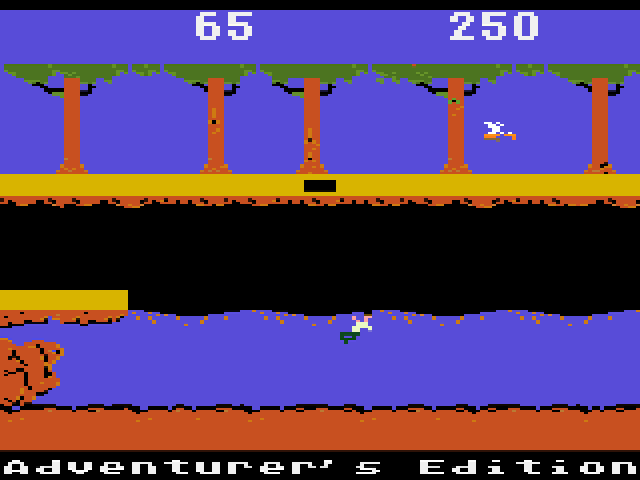
The 5200 version of Pitfall! was an exercise in frustration due to the console’s notoriously awful controller. Even simple tasks (like jumping on crocodile heads and swinging on vines) required inordinate levels of patience and luck. Thankfully, the 5200 version of Pitfall II is a lot more manageable, and most of the serious control issues were addressed. Without question, Pitfall II was the most ambitious adventure game of its era. Its sprawling landscapes required players to jump across deadly chasms, swim through dangerous bodies of water, and grab onto balloons to ascend to new areas. An innovative “check point” system effectively eliminated the need for lives or continues and allowed for a much longer game. Pitfall II was easily one of the most technically impressive Atari 2600 games, but the 5200 version didn’t necessarily push the hardware as far as it could have. The 5200 version doesn’t look or sound significantly better than its 2600 counterpart. A brand new area was added in the 5200 version, however. This new area was more complex than the rest of the game, and it even featured a variety of new creatures. This additional content made the 5200 version of Pitfall II a worthwhile experience even for those who had already played through the original.
6
Star Raiders
1982
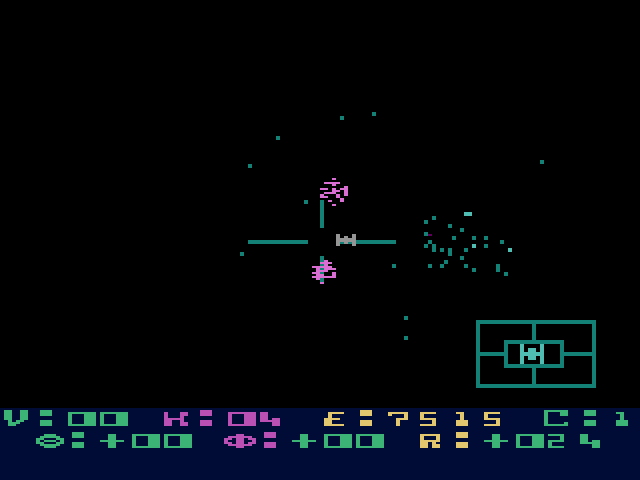
Star Raiders was probably the single most important game in the Atari 8-bit family, and its original 1979 release seemed perfectly-timed to capitalize off of the Star Wars phenomenon. The game required players to use a galactic chart to navigate around the galaxy before engaging in real-time space battles with enemy fighters. In addition to destroying enemy space ships, players also had to avoid asteroids and protect star bases from being attacked. The game’s combat sections were presented in a first-person view and the gameplay was considered revolutionary at the time. Upon taking damage, the player’s ship can be affected in a number of ways. Depending on the situation; shields, engines, weapons, or information displays will begin to malfunction. Players also have to carefully manage their energy reserves. Without question, Star Raiders was considerably more complex and involving that most games from the era. The 5200 version of the game was even better than the Atari 400/800 version in many regards. The 5200’s analog controller offered more precision over the digital control scheme that was used in the original version. Also, the built-in keypad on the 5200 controller was put to great use and felt more natural than using a keyboard. If nothing else, Star Raiders was one of the few games that really illustrated the inherit differences between the 5200 and the 2600.
5
Robotron: 2084
1983
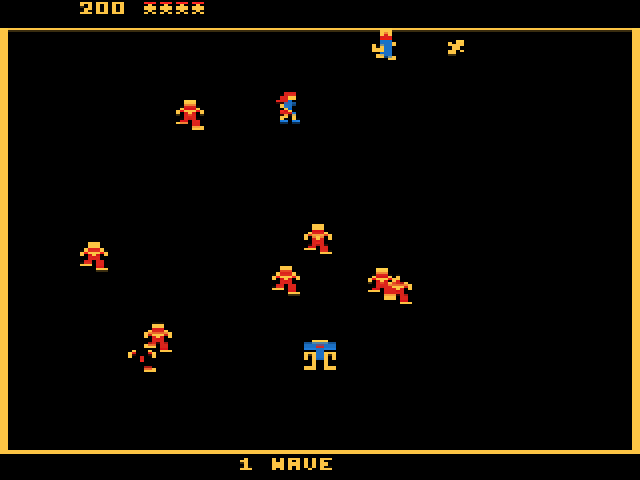
Robotron: 2084 is a classic arcade game that was noteworthy for its simultaneous use of two joysticks. One stick was used to control the movement of the character while the other was used to control the direction that the character’s weapon would fire. (Similar control schemes were subsequently implemented in games like Smash TV and Geometry Wars.) The premise of Robotron: 2084 involved a fictional (and completely realistic) future in which robots had turned against their human creators. The objective is simply to defeat endless waves of enemy robots and rescue any surviving members. The 5200 version doesn’t look quite as nice as the arcade version does, but the fast-paced gameplay holds up remarkably well. The 5200’s analog controllers are a good fit for the game, and a “joystick coupler” peripheral makes it easier for players to handle two controllers at once in order to best emulate the arcade experience. Not many home versions of Robotron: 2084 supported a dual-joystick setup, so the 5200 version really stood out at the time.
4
Centipede
1982
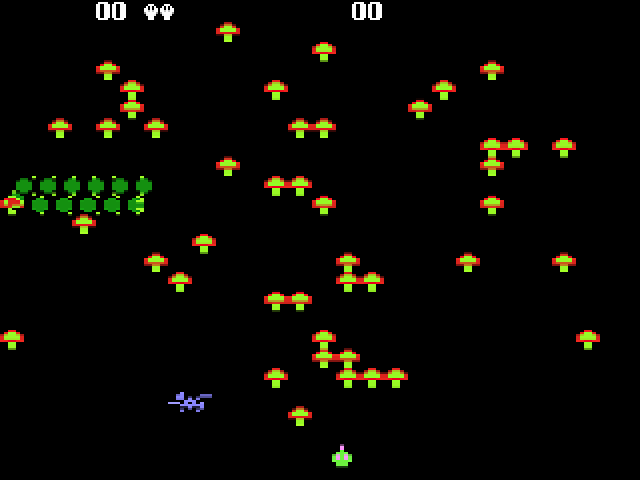
Centipede is an extremely fast-paced shooter with an interesting garden theme. Instead of blasting mutants or space aliens, players will encounter jumping spiders, bouncing fleas, and deadly centipedes. Incidentally, the prospect of killing swarming insects was appealing to a lot of people, and Centipede became one of the first arcade games to amass a significant female user base. There are a few technical differences between the original arcade game and the 5200 version. The most obvious difference revolves around the fact that the screen in the arcade game had a vertical orientation. The 5200 version looks squashed down in comparison and the centipedes take less time to reach the bottom of the screen. Fortunately, the controls hold up surprisingly well in the 5200 port. Centipede was one of the few games that worked well with the horrible Atari 5200 joysticks. Ironically, there was no reason to use the joysticks in the first place because the game also supported the Pro-Line Trak-Ball controller. Regardless of how you play it, Centipede on the 5200 is a great port of a true classic.
3
Miner 2049er
1983
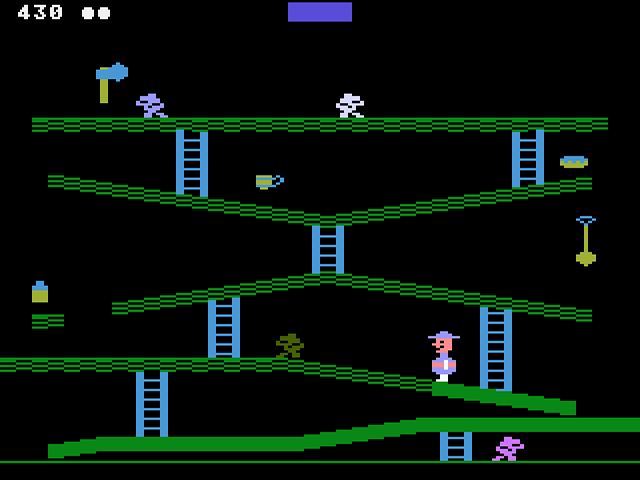
It would be easy to liken Miner 2049er to Donkey Kong, and there are several significant similarities between the games. The action in both games is confined to a single screen, players are encouraged to avoid enemies by jumping over them, ladders and elevators are used to traverse through the levels, and various bonus items are found in each stage. Miner 2049er requires a lot more strategy, however. Most of the stages in Donkey Kong simply required players to get to the top of the screen, whereas Miner 2049er actually requires players to thoroughly inspect every section of a level before they can advance. With ten stages to play through, Miner 2049er is also considerably longer and more challenging than Donkey Kong. Many of the levels in Miner 2049er have to be completed in a very specific way, and a distinct “chutes and ladders” vibe can be seen throughout the game. Most early platformers relied entirely on reflexes, so the strategic elements of Miner 2049er helped the game stand out.
2
Ms. Pac-Man
1983
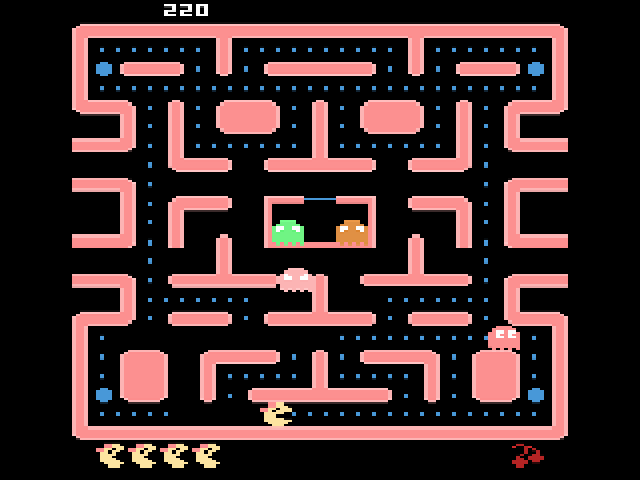
I actually debated on whether I should recognize Pac-Man or Ms. Pac-Man on this list. The 5200 version of Pac-Man represented a quantum leap over the 2600 port, while Ms. Pac- Man wasn’t as big of an improvement. At the end of the day, Ms. Pac-Man is still the better game. The maze layouts are more interesting, the intermissions are more adorable, and the fruit actually bounces as it moves around the screen! I also appreciated how the ghosts in the 5200 version of Ms. Pac-Man actually had eyes. Ms. Pac-Man probably sounds pretty antiquated by today’s standards, and it comes from an era where “bouncing fruit” and “ghost eyes” are considered noteworthy features. In spite of (or perhaps because of) how simplistic the game is, the gameplay in Ms. Pac-Man has stood the test of time better than almost any other game on the Atari 5200. It’s still fun to play to this very day. Against all odds, Ms. Pac-Man managed to escape her husband’s considerable shadow. The girl should be recognized feminist icon!
1
Qix
1982
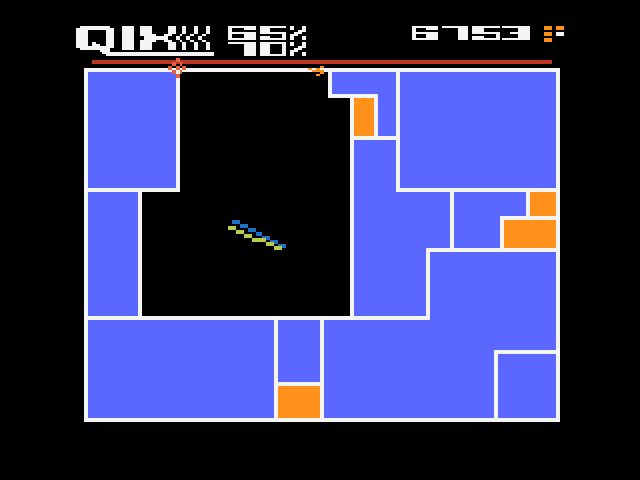
Qix is a simple puzzle game where players attempt to uncover a playing field by drawing a series of rectangular boxes while avoiding roaming “Qix” spikes. You can either choose to play it safe and draw a series of small boxes, or go for more points by drawing larger boxes. Naturally, drawing larger boxes will also increase the risk of being hit by the spikes. The speed in which you choose to draw the boxes will also affect how many points you earn. This simplistic and innovative formula made Qix an instant hit in the arcades and led to the creation of several shameless clones. Because the graphics in the arcade were relatively simplistic, the Atari 5200 port was able to stay very true to the original. Best of all, Qix is one of the few Atari 5200 games that isn’t marred by horrible controls. Qix is arguably the best pre-Tetris puzzle game and certainly the best game on the 5200. Geometry has never been more fun… unless you count all of the weird porn games that Qix inspired.

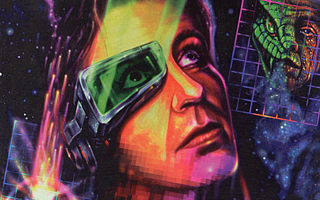
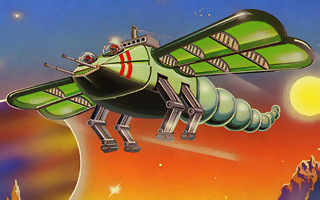
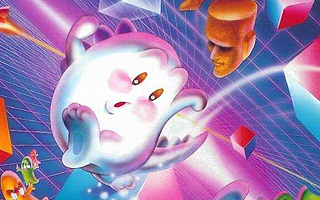
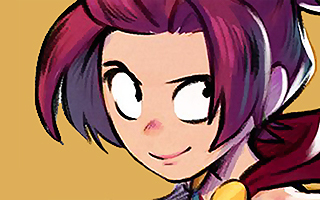
Do you agree with this list? Let us know what you think by leaving a comment below. Your opinion matters!